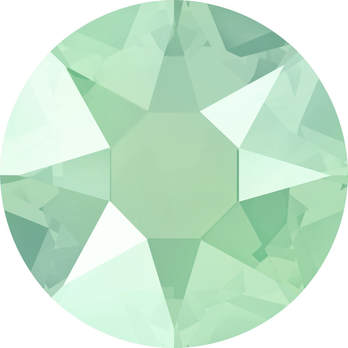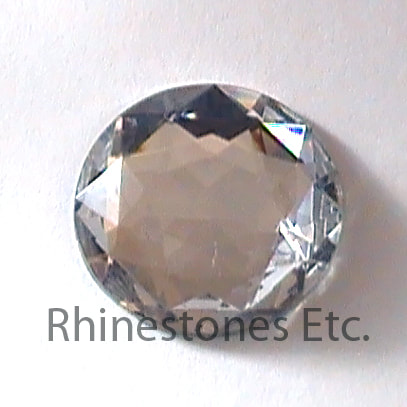|
Crystal, glass, acrylic, or plastic. There are many rhinestone types available for purchase today. It wasn’t always so. The original rhinestone was a naturally occurring stone found along the banks of the Rhine River. These sparkling quartz pebbles most likely had a high lead content making them a highly sought prize. As the resource became depleted, glassmakers sought to copy the naturally occurring product. Today, there are many different manufacturers of rhinestones producing an assortment of colors, sizes, and shapes. If this is your first-time shopping for rhinestones, it can be confusing when looking at all the choices. When searching for a company that can help you sort through all the array of choices, shop Rhinestones Etc. A Brief History of Brand Name Rhinestone Manufacturers Glass craftsmen sought to imitate the sparkle and brilliance of real gemstones particularly diamonds. In 1715, Bohemian glassmakers introduced the chaton, the world’s first cut crystal stone. Later on, craftsmen coated the back of the crystal with a metal foil. These early rhinestones closely resembled real diamonds in appearance. However, these rhinestones were quite expensive as glassmakers needed to cut each one by hand. Almost 200 years later, one enterprising Bohemian glassmaker, Daniel Swarovski, devised a machine that cut crystal faster and more precise. This new invention cut crystal with unprecedented precision, revolutionizing rhinestone production. Moving to Austria, he worked hard to turn his product into the premier brand it is today. Meanwhile, the craftsman of Bohemia continued to work independently until 1948. Then, the 25 companies and factories continuing the glassmaking tradition merged into one national company under the name of Preciosa. Today, the name Preciosa, like Swarovski, is synonymous with quality. However, many other companies have sprung up to complete with these giants. These rhinestones may be crystal, glass, or acrylic with less facets. Consumers find these rhinestones appealing due to their much lower price point. Do Rhinestones Have Molded or Cut Facets? Facets are the small plane surfaces of the rhinestones. Depending on the manufacturer, rhinestone companies produce faceted rhinestones from a mold or cutting. Acrylic rhinestones have molded facets. Manufacturers inject acrylic into different shape molds. Typically, glass rhinestone manufacturers may use molds or cut facets. While crystal rhinestone manufacturers laser-cut facets. One characteristic of a quality rhinestones is the number of facets and these vary by manufacturer. The more facets, the great the reflection of light. The Swarovski Xirius Rhinestone has the greatest number of facets of any brand with 16. Preciosa’s Maxima Rhinestone has 15 facets. Some of the other lesser-known brands may have 10 facets. Typically, acrylic rhinestones have only 8 facets. Acrylic, Glass, or Crystal Rhinestones Crystal rhinestones are the most expensive but also the most diamondlike. In the past, manufacturers made crystal by adding lead to glass. Today, many companies use barium instead because of the toxicity of lead. At any rate, mixing glass with one of these ingredients leads to higher refraction of light. Thus, when light hits the rhinestone, it acts as a prism, breaking light up into a myriad of colors. Both Swarovski and Preciosa produce a lead-free crystal rhinestone. Made from plastic, acrylic rhinestones are lead-free. They are also the cheapest option and are great for crafting projects. Glass rhinestones fall somewhere in between acrylic and glass. The quality of glass rhinestones varies depending upon the manufacturer. Various Rhinestone Types Are Available in Many Colors and Shapes Whichever rhinestone you decide to buy, you’ll find a large selection of rhinestone colors to choose from. Both Swarovski and Preciosa produce a considerable selection of choices and routinely add new hues to their collections. Moreover, some rhinestone manufacturers make animal print, ceramic, or marble rhinestones. Additionally, rhinestone shapes are almost as varied as the color selection. While round is the most popular shape, you’ll also find square, rectangle, triangle, heart, pear, as well as many others. Moreover, all these shapes are available in different rhinestone sizes. Ranging from tiny .9mm to large 18.22 mm, rhinestone sizes depend on the manufacturer. Rhinestones Are Extremely Versatile All rhinestones come in a variety of colors, shapes, and sizes making them extremely versatile. Throwing a girl’s princess party? Some colorful acrylic rhinestones can will some inexpensive bling. Prom time and your budget is slim? Browse the racks at the thrift store and give your fashion discovery a boost of sparkle with rhinestones. Not sure where to begin with rhinestones? Here at Rhinestones Etc. we’ll help you find the right rhinestone, in the right size and color.
0 Comments
Your comment will be posted after it is approved.
Leave a Reply. |
KarenI have been adding bling for over 20 years. Through my projects, I hope you find inspiration. Categories
All
Archives
July 2024
|
Home About Policies Return Shipping
Contact Us Size Chart Privacy Products Reviews
Copyright 2024 Rhinestones Etc. All rights reserved.
Contact Us Size Chart Privacy Products Reviews
Copyright 2024 Rhinestones Etc. All rights reserved.



 RSS Feed
RSS Feed